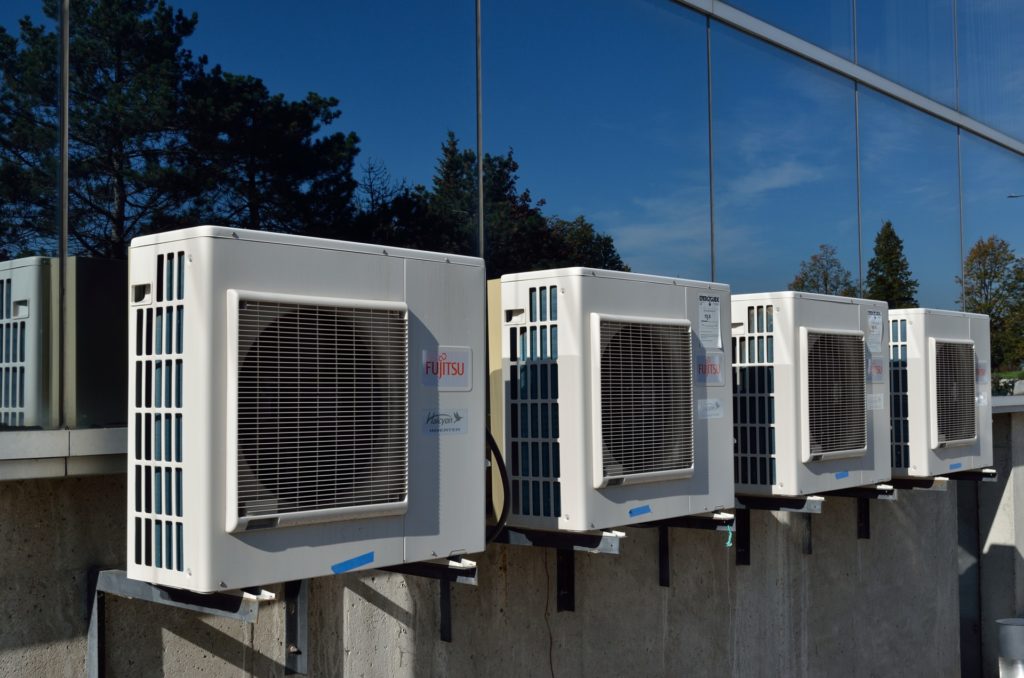
The world is heading for a significant growth in energy requirements for comfort cooling. With increasing populations and urbanization, and rising temperatures, cooling is no longer just a luxury, but an urgent priority for health and well-being, productivity, and in extreme cases, survival. However, the warmer it gets, the more we use air conditioning. The more we use air conditioning, the warmer it gets. Therein lies the challenge of cooling a warming world.
The use of energy for cooling buildings more than tripled between 1990 and 2016, and is continuing to grow faster than for any other end use in buildings. Nearly 70% of this increase comes from the residential sector, particularly in developing economies. Nothing feels better than walking into an air-conditioned room after being outside with the sun beating down on a hot, humid summer day. But that air conditioning cooling your home relies on an electrical grid that most likely produces carbon dioxide emissions that are contributing to climate change causing hot, humid days to occur more frequently and with more intensity. With hot regions predicted to get hotter, there’s more need for cooling relief. Billions of people are at risk of exposure to increasingly dangerous heat conditions. They need access to cooling, but without warming the planet.
A global necessity
Our planet is getting hotter. Already, 30 percent of the world’s population is exposed to potentially dangerous heat conditions; by 2100, up to three-quarters could be at risk. Affordable cooling is becoming a global necessity, allowing for increased productivity, positive health outcomes, and accelerated economic development.There are currently 1.2 billion room air conditioning units in service around the world and is estimated to grow to at least 4.5 billion by 2050. That number increases five-fold for developing countries over the same period.
The increased demand for air-conditioning units would place a massive burden on electricity grids that are already straining at their limits. When combined with the atmospheric impact of the refrigerants used by air conditioners, the energy consumption associated with mechanical cooling represents one of the largest end-use risks to our climate.
The world needs a breakthrough air conditioning technology
One solution towards solving the problem presented by air conditioning – and one that doesn’t require a complete overhaul of the modern city – would be to build a better air conditioner. There is plenty of room for improvement. The invention of air conditioning predates both the first airplane and the first public radio broadcast, and the underlying technology has not changed much since 1902. The affordability of the air conditioner has widened, but as far as efficiency, they’ve improved but they haven’t leaped. Breakthrough air conditioning technology could amount to the single biggest technology-based intervention we can make to address global warming.
It is clear that the world needs a breakthrough air-conditioning technology, one that meets the world’s booming demand for cooling without contributing to runaway climate change. To achieve a profound climate impact, this technology must simultaneously address the indirect emissions from electricity and the direct emissions from refrigerants. International initiatives, such as those centered on the Kigali Amendment to the Montreal Protocol, have made significant headway in addressing this challenge. While important, these initiatives are not sufficient to address the full consequences of cooling demand growth, as refrigerants account for only 20 to 30 percent of RAC-related emissions. Through technology innovation, we can solve the critical climate threat that comes from growing demand for room air conditioning.
Solutions
One plan to encourage engineers to build a more efficient air conditioner is the Global Cooling prize. The aim is to design an air conditioner that is five times more efficient than the current standard model, but which costs no more than twice as much money to produce. The contest has received more than a hundred entries, from lone inventors to prominent universities, and even research teams from multibillion-dollar appliance giants.
New air-conditioner technology would be a huge part of the solution but there are other ways to help reduce the emissions from air conditioners.
Among the suggestions are planting trees, retrofitting old buildings with proper ventilation and no longer building concrete and glass cages that cannot withstand a heatwave. While these things are technically cheaper, they require changes in behaviour and major policy shifts – and the open secret of the climate crisis is that nobody really knows how to make these kind of changes on the systematic, global scale that the severity of the crisis demands.
Conclusion
We need to do all of these things to address the cooling challenge and shake up an entrenched industry. It is possible to solve the global cooling challenge and enable thermal comfort for all without warming the planet: the solution lies in a breakthrough cooling technology along with behavioural and policy shifts. The result will improve people’s health, productivity, and well-being, all while avoiding climate change.
FIELDBOSS stays current on industry trends to keep you informed on what’s happening in the HVACR world. Read our blog and sign up for our newsletter for all the latest news.
#KigaliAmendment #NewTechnology #Refrigerants